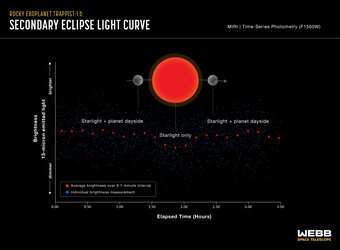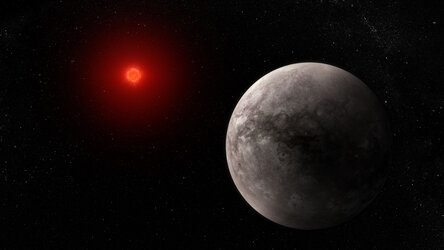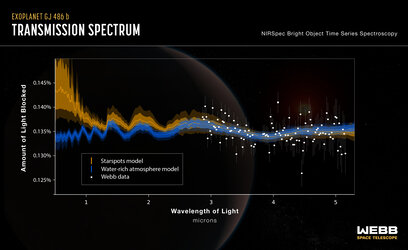Accept all cookies Accept only essential cookies See our Cookie Notice

About ESA
The European Space Agency (ESA) is Europe’s gateway to space. Its mission is to shape the development of Europe’s space capability and ensure that investment in space continues to deliver benefits to the citizens of Europe and the world.
Highlights
ESA - United space in Europe
This is ESA ESA facts Member States & Cooperating States Funding Director General Top management For Member State Delegations European vision European Space Policy ESA & EU Space Councils Responsibility & Sustainability Annual Report Calendar of meetings Corporate newsEstablishments & sites
ESA Headquarters ESA ESTEC ESA ESOC ESA ESRIN ESA EAC ESA ESAC Europe's Spaceport ESA ESEC ESA ECSAT Brussels Office Washington OfficeWorking with ESA
Business with ESA ESA Commercialisation Gateway Law at ESA Careers Cyber resilience at ESA IT at ESA Newsroom Partnerships Merchandising Licence Education Open Space Innovation Platform Integrity and Reporting Administrative Tribunal Health and SafetyMore about ESA
History ESA Historical Archives Exhibitions Publications Art & Culture ESA Merchandise Kids Diversity ESA Brand Centre ESA ChampionsLatest
Space in Member States
Find out more about space activities in our 23 Member States, and understand how ESA works together with their national agencies, institutions and organisations.
Science & Exploration
Exploring our Solar System and unlocking the secrets of the Universe
Go to topicAstronauts
Missions
Juice Euclid Webb Solar Orbiter BepiColombo Gaia ExoMars Cheops Exoplanet missions More missionsActivities
International Space Station Orion service module Gateway Concordia Caves & Pangaea BenefitsLatest
Space Safety
Protecting life and infrastructure on Earth and in orbit
Go to topicAsteroids
Asteroids and Planetary Defence Asteroid danger explained Flyeye telescope: asteroid detection Hera mission: asteroid deflection Near-Earth Object Coordination CentreSpace junk
About space debris Space debris by the numbers Space Environment Report In space refuelling, refurbishing and removingSafety from space
Clean Space ecodesign Zero Debris Technologies Space for Earth Supporting Sustainable DevelopmentApplications
Using space to benefit citizens and meet future challenges on Earth
Go to topicObserving the Earth
Observing the Earth Future EO Copernicus Meteorology Space for our climate Satellite missionsCommercialisation
ESA Commercialisation Gateway Open Space Innovation Platform Business Incubation ESA Space SolutionsLatest
Enabling & Support
Making space accessible and developing the technologies for the future
Go to topicBuilding missions
Space Engineering and Technology Test centre Laboratories Concurrent Design Facility Preparing for the future Shaping the Future Discovery and Preparation Advanced Concepts TeamSpace transportation
Space Transportation Ariane Vega Space Rider Future space transportation Boost! Europe's Spaceport Launches from Europe's Spaceport from 2012Latest

Rocky exoplanet TRAPPIST-1 b (temperature comparison)
Thank you for liking
You have already liked this page, you can only like it once!
Comparison of the dayside temperature of TRAPPIST-1 b as measured using Webb’s Mid-Infrared Instrument (MIRI) to computer models showing what the temperature would be under various conditions. The models take into account the known properties of the system, including the planet’s size and density, the temperature of the star, and the planet’s orbital distance. The temperature of the dayside of Mercury is also shown for reference.
The dayside brightness of TRAPPIST-1 b at 15 microns corresponds to a temperature of about 500 K (roughly 230°C). This is consistent with the temperature assuming the planet is tidally locked (one side facing the star at all times), with a dark-coloured surface, no atmosphere, and no redistribution of heat from the dayside to the nightside.
If the heat energy from the star were distributed evenly around the planet (for example, by a circulating carbon dioxide-free atmosphere), the temperature at 15 microns would be 400 K (125°C). If the atmosphere had a substantial amount of carbon dioxide, it would emit even less 15-micron light and would appear to be even cooler.
Although TRAPPIST-1 b is hot by Earth standards, it is cooler than the dayside of Mercury, which consists of bare rock and no significant atmosphere. Mercury receives about 1.6 times more energy from the Sun than TRAPPIST-1 b does from its star.
MIRI was developed as a partnership between Europe and the USA: the main partners are ESA, a consortium of nationally funded European institutes, the Jet Propulsion Laboratory (JPL) and the University of Arizona. The instrument was nationally funded by the European Consortium under the auspices of the European Space Agency.
[Image description: Infographic titled, “Rocky Exoplanet TRAPPIST-1 b Dayside Temperature Comparison, MIRI F1500W” showing five planets plotted along a horizontal temperature scale: Earth, TRAPPIST-1 b, Mercury, and two different models of TRAPPIST-1 b.]
-
CREDIT
NASA, ESA, CSA, J. Olmsted (STScI), T. P. Greene (NASA Ames), T. Bell (BAERI), E. Ducrot (CEA), P. Lagage (CEA) -
LICENCE
CC BY 4.0 INT or ESA Standard Licence
(content can be used under either licence)

Rocky exoplanet TRAPPIST-1 b (secondary eclipse light curve)

Rocky exoplanet TRAPPIST-1 b (illustration)

Super-Earth exoplanet 55 Cancri e (secondary eclipse…

Super-Earth exoplanet 55 Cancri e (emission spectrum)















 Germany
Germany
 Austria
Austria
 Belgium
Belgium
 Denmark
Denmark
 Spain
Spain
 Estonia
Estonia
 Finland
Finland
 France
France
 Greece
Greece
 Hungary
Hungary
 Ireland
Ireland
 Italy
Italy
 Luxembourg
Luxembourg
 Norway
Norway
 The Netherlands
The Netherlands
 Poland
Poland
 Portugal
Portugal
 Czechia
Czechia
 Romania
Romania
 United Kingdom
United Kingdom
 Slovenia
Slovenia
 Sweden
Sweden
 Switzerland
Switzerland


























